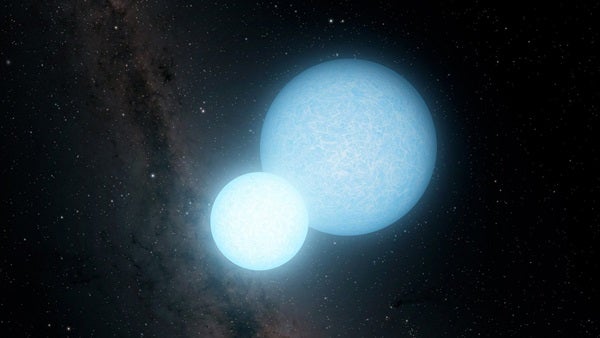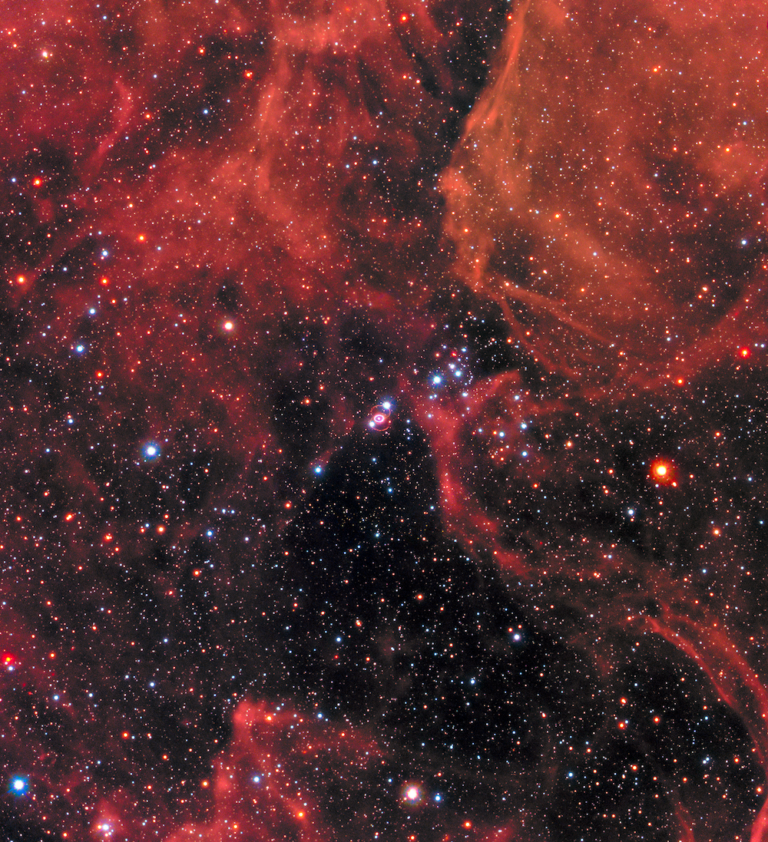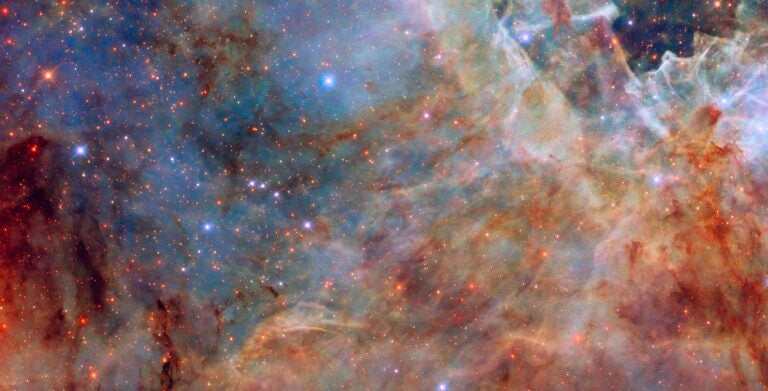Pulse to the beat
Astronomers studying a binary white dwarf system have found a new pulsating white dwarf. “We had no idea that the white dwarf was pulsating when we started the work,” said the paper’s first author, Steven Parsons of the University of Sheffield, in an email to Astronomy. “It was a little bit of luck that allowed us to discover the pulsations.”
That luck came in the form of data from HiPERCAM, a high-speed imaging camera mounted on top of the world’s largest telescope, the Gran Telescopio Canarias. The camera is able to take one picture every millisecond in five different colors. That capability allowed an undergraduate student working with the data to spot that one of the white dwarfs in the system is pulsating rapidly. “A lot of the work for this paper was actually done by the undergraduate student,” said Parsons.
Those pulsations will now help astronomers learn more about how being in a binary star system affects the internal structure of the white dwarf, which will in turn teach us more about these strange stellar remnants.
Strange stuff
This binary system is even more special: The two stars are also eclipsing each other, meaning they pass in front of each other as seen from Earth. The white dwarf is the first pulsating star of its kind found in this type of star system. Through the pulsations and the eclipses, the team measured the mass and radius of the white dwarf. And that allowed them to determine what it’s made of. “It’s generally very difficult to determine what a white dwarf is made out of because it’s all hidden below a surface layer of hydrogen that we can’t see through,” said Parsons. “However, the size of a white dwarf is affected by its internal composition.”
Most white dwarfs are made out of carbon and oxygen, created when a star runs out of hydrogen and begins fusing helium into heavier elements. But this one is made mostly of helium. The team believes this strange composition could be because the star’s companion stopped its evolution early, before it could fuse helium, leaving it with this strange chemical makeup.
The team’s work was published March 16 in Nature Astronomy. Now, the researchers plan to continue watching the white dwarf to record as many pulsations as possible using HiPERCAM and the Hubble Space Telescope.

What we can learn from the life cycles of stars? Astronomy’s free downloadable eBook, Stars: The galaxy’s building blocks contains everything you need to know about how stars live, die, and change their galactic homes over time.










